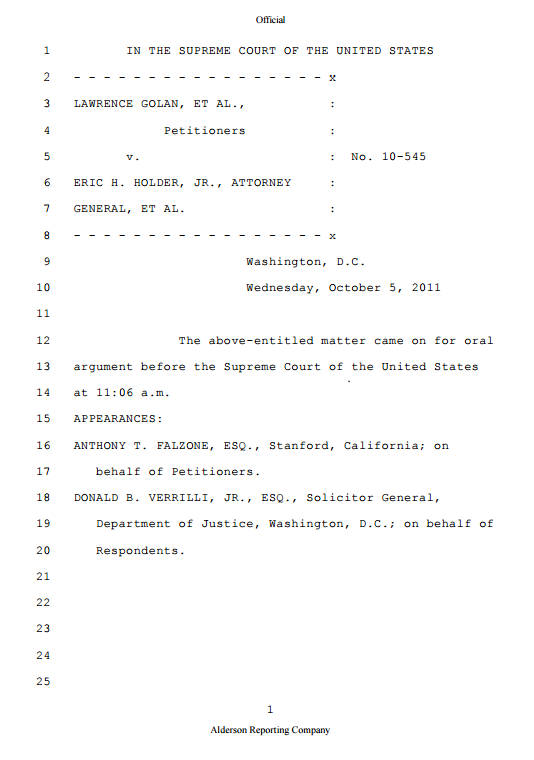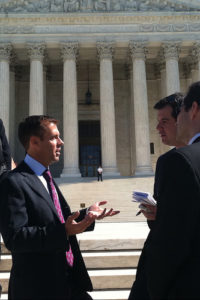U.S. Supreme Court to Hear Oral Argument in Fair Use Project Case “Golan v. Holder” on October 5
Updated October 7, 2011

Transcript (PDF) of the Supreme Court oral argument in Golan v Holder.
Select news coverage:
- In Supreme Court Argument, a Rock Legend Plays a Role, New York Times
- Supreme Court copyright case will decide fate of millions of once-public works, Washington Post
- Supreme Court hears arguments in copyright case, KPCC-FM Southern California Public Radio

Original post, October 4, 2011
The Case could affect the status of many famous works, including symphonies by Shostakovich and Stravinsky, books by Virginia Woolf, artwork by Picasso, films by Fellini and Hitchcock
On October 5, 2011, Anthony Falzone, executive director of the Fair Use Project at the Center for Internet and Society will present oral argument at the Supreme Court of the United States in Golan, et al., v. Holder, et al. (docket no. 10-545).
SCOTUSBlog reporter Lyle Denniston reports:
The Court will hold one hour of oral argument on a case with a major global and cultural impact: a test of Congress’s power to put into effect a series of copyrights that had never existed in the U.S. — in order to protect authors and composers worldwide under international treaties.
The Court will review the constitutionality of a federal statute that has removed thousands of foreign works from the Public Domain and placed them under copyright protection.
The case presents a two-pronged constitutional challenge to the 1994 law passed by Congress—an amendment to the Copyright Act, the Uruguay Round Agreements Act (URAA): the case will test whether Congress has the authority to remove works from the Public Domain under the “Progress Clause” and whether the 1994 law violates the First Amendment rights of those who performed, adapted, restored and distributed works which had previously been in the Public Domain—works that include symphonies by Sergei Prokofiev, Igor Stravinsky, and Dmitri Shostakovich; books by C.S. Lewis, Virginia Woolf, and H.G. Wells; films by Federico Fellini, Alfred Hitchcock, and Jean Renoir; and artwork by M.C. Escher and Pablo Picasso, including Picasso’s masterpiece Guernica.
The Fair Use Project filed the petition on behalf of orchestra conductors, educators, performers, film archivists and motion picture distributors who relied for years on the free availability of works in the Public Domain, which they performed, adapted, restored and distributed.
Anthony Falzone told Washington Post reporter Robert Barnes, “This case raises the question, ‘What is copyright really for?’ Is it just something that benefits authors, or is it something that benefits society?”
In September, Falzone blogged: Golan v. Holder Merits Brief Explains Why Congress Is Not Allowed To Privatize The Public Domain.
Others who helped prepare this case include Julie Ahrens, the associate director of the Fair Use Project, and Daniel Nazer, a fellow with the Fair Use Project.
About the Fair Use Project
The Fair Use Project was founded in 2006 as part of the Stanford Law School Center for Internet and Society. Its purpose is to provide legal support to a range of projects designed to clarify, and extend, the boundaries of “fair use” in order to enhance creative freedom.
Additional resources:
- Golan Merits Brief (FILED).pdf 245.97 KB
- Holder Merits Brief.pdf 304.43 KB
- Golan Reply Brief.pdf 192.42 KB
- U.S. Supreme Court will Review Constitutionality of Restoring Copyrights in Foreign Works: Court Grants Cert in Stanford Law School Fair Use Project Case Golan v. Holder
- Stanford Law School’s Fair Use Project Asks Supreme Court to Rule on Constitutionality of Restoring Copyrights in Foreign Works
